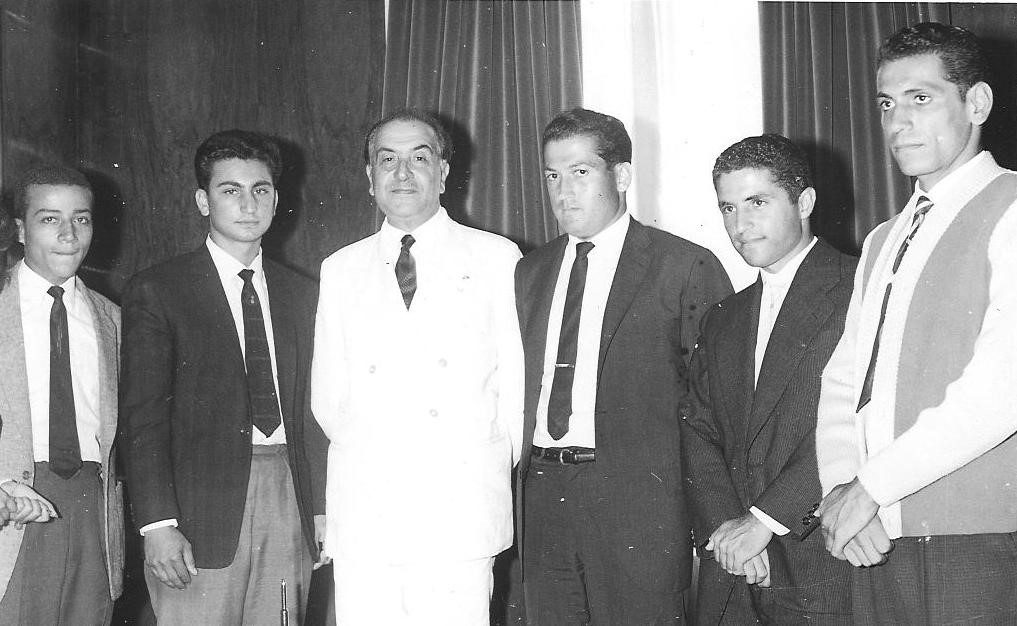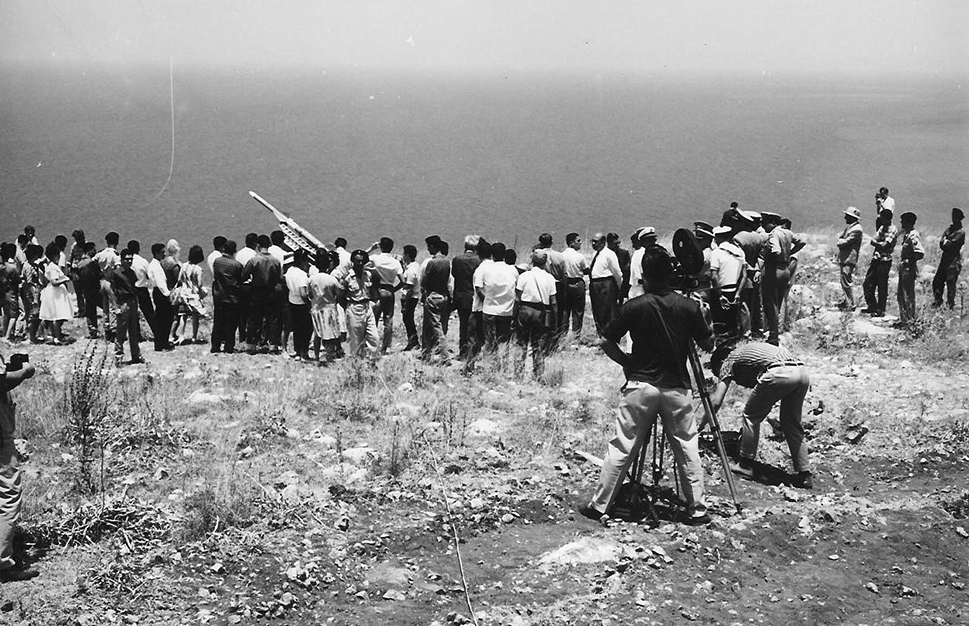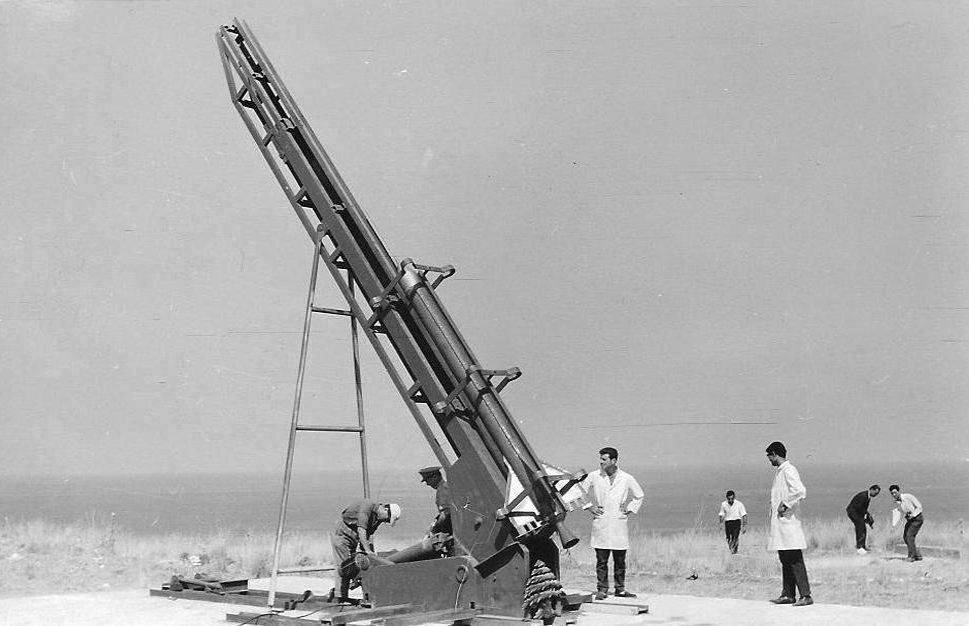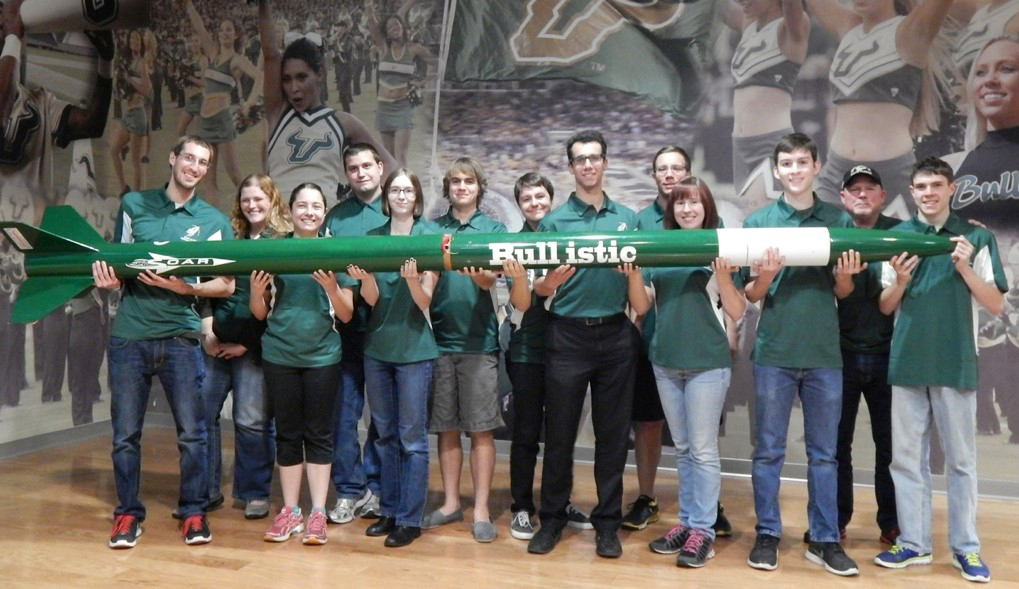One of the vibrant and active student organization at the University of South Florida (USF) in Tampa, is the Society of Aeronautics and Rocketry (SOAR). Organized in 2010, their goal is to perfect the launching of rockets into space to put satellites into orbit for scientific studies. In the meantime, SOAR is actively involved in the design, building, launching and participating in competitions with winning results. Facing SOAR is a nationwide competition involving universities from the US and Canada. The competition is known as the Base 11 Space Challenge. But first, on the genesis of SOAR.
To fully understand the impact the SOAR program has on students and the way the general public understands aeronautics, we must first introduce Dr. Manoug Manougian – Professor of Mathematics, Director of the STEM Education Center at USF, and SOAR's faculty advisor.
"Growing up in Jerusalem, my city of birth, was a time when warring parties dominated the region. I found tranquility by reading science fiction books. I was fascinated with space, flying carpets, and Jules Verne's "From the Earth to the Moon" with Tampa, Florida as the launching site. Not realizing that Tampa was to one day become my permanent residence. For my high school education, I attended St. George’s School in Jerusalem, graduating in 1954 with academic honors and an athletic trophy. Three months after graduation, I was hired at St. George's as a teacher of mathematics, physics and chemistry, preparing the senior class for the London GCE examinations. What a coincidence that the subjects I was teaching were ingredients for sending rockets into space!"
In this era, science fiction became reality, and space exploration took center stage. Planes replaced flying carpets and real rockets flew into space. Then, in 1957 the Soviet Union sent Sputnik in Earth orbit, followed by Yuri Gagarin, who became the first astronaut to orbit the Earth (1961). On May 25, 1961, President John F. Kennedy declared that it was time for an American to land on the Moon and soon thereafter, rocketry and space exploration became the passion of many – including Manougian.
"After high school, and four years at the University of Texas at Austin, in 1960 I graduated with a BA degree. I was offered a teaching position at Haigazian College in Beirut, Lebanon. The Armenian college was a newly founded liberal arts college with about 200 students," remembers Manougian. "Lebanon is a beautiful country. Beirut was known as the Paris of the Middle East, and its ski resort matched that of Switzerland. I was assigned to teach mathematics and physics. After discussions with Dr. John Markarian, President of Haigazian College, Haigazian College Rocket Society (HCRS) was approved and formally established. Freshman and sophomore students joined the club, all eager to build and see a rocket take off. That helped to inspire and challenge my students to learn mathematics, physics along with chemistry. Classes were held to study trajectories and rocket design."
The club’s first rule? “Rockets are for space exploration and not for wars and killing.” The motto, taken from essayist and philosopher Ralph Waldo Emerson, was, “Do not go where the path may lead, go instead where there is no path and leave a trail.”
Being at the smallest college, in one of the smallest countries in the Middle East,
did not phase the students involved in the club. Instead, participants of HCRS proved
to be enthusiastic, hardworking and determined to succeed. Starting from scratch,
using spare pipes from local shops, mixing chemicals, and after many trial and errors,
the group built and successfully launched one and two-stage rockets – the first in
the Middle East.

Meeting the President of Lebanon
“With our successes, President Fouad Chehab of Lebanon invited my students and me to the Presidential Palace, praised our work, and provided us with funds, including access to the military’s workshop and a launching site overlooking the Mediterranean Sea. Captain Joseph Wehbe of the Lebanese military, joined the club and facilitated for [our team] the use of the workshop whenever needed.”
It was at that point in time that the society’s name was changed to the Lebanese Rocket Society (LRS), and the rockets were labeled “Cedar,” the National emblem of Lebanon.

Cedar 2-C at take-off
From the time period of 1962 to 1964, a two-stage rocket, Cedar 2-C, with a range of 10 miles, was launched into the Mediterranean Sea. That was followed by two three-stage rockets, Cedar 3 and Cedar 4, both crossing the Karman Line, the edge of space, which is about 62 miles above the surface of the oceans. Crowds celebrated in the streets of Beirut and Lebanon, memorializing the historic Cedar 4 on a postage stamp.
During the next two years, LRS produced four rockets, with a Lebanese navy ship in the Mediterranean monitoring the flights.
Three of the rockets were one-stage, with a length of 9.85 ft. One failed on the launcher. The other two flew a distance of 30 miles. The last rocket that the LRS produced and launched was Cedar 8, a two-stage rocket 18.7 ft long and weighing 772 lbs. As expected, the second stage was equipped with flares, which were intended for spectators to witness the separation of stages. The first stage landed in the Mediterranean, while the second stage continued its flight and landed near Cyprus, 90 miles from Beirut. In the meantime, Lebanon decided to build several museums including a Space Museum.

Spectators at launch site

Cedar 6
The launches were witnessed by the general public, the news media, representatives from various embassies, including the Soviet Union and the United States, and members of the Lebanese military. For the U.S., it wasn’t until 53 years later that students at the University of Southern California launched a rocket that crossed the Karman line.
“In 1966, eager to complete my education, concerned about the political climate, and with winds of war blowing, I ended the LRS program and returned to the University of Texas at Austin. A few months later, the Six Day War brought an end to tranquility, and the museums were abandoned.”
At the time, it seemed like a disappointing end to an exhilarating era in rocketry for the region, but the story would live on, as did Mounougian’s career.
Two years later, with a Ph.D. degree, Manougian joined the faculty at the University of South Florida in Tampa. Although the LRS had gone into oblivion, French Lebanese filmmakers, Joana Hadjithomas and Khalil Joreige, produced in 2010 a 90-minute documentary on the history of the LRS. The documentary received top awards from Doha to Hong Kong and beyond. It was aired at all major film festivals. The Cambridge International Film Festival (2013) claimed “The story remains truly inspiring, …” A partial list of cities where the film was shown includes: Toronto, London, Manchester, Paris, Oxford, Montreal, Los Angeles, New York, San Francisco, St. Louis, Abu Dhabi, Buenos Aires, Seville, and the film was shown at schools in both France and Lebanon.
The print media, to this day, 53 years later, continues to tell the story of the LRS in languages that include English, French, German, Italian, Arabic, Spanish, Portugese, Scandinavian, Armenian, Turkish, and more.
In 2011, The New Scientist Magazine wrote, “The launches were remarkably successful,” The Smithsonian Magazine declared “A mind boggling feat”. The accolades continued, with The Guardian (2013) saying, “It encourages students from across the Middle East to fire rockets skyward rather than at each other,” the US Information Service wrote, “Perfect Launching. Proud Moment for a Lebanese Rocket Club.”
The film seem to reinvigorate and reenergize the story, once again giving way to opportunities in the area of science and technology for regions in the Middle East.
Haigazian College’s student population increased five-fold and is now known as Haigazian University. A new generation in Lebanon has emerged embracing science for peaceful purposes. The Space Museum, once abandoned and left to be overtaken by its surroundings, is being renovated, with an invitation to other nations to display their creativity promoting space exploration and peaceful coexistence.
“Letters I receive from students, professors, and scientists refer to the LRS as an inspiration,” says Manougian. He shares several examples, which include both educational institutions and government-sponsored programs.
Dr. Ghaleb Faour, (2019) Director, Center for Remote Sensing, at the National Council for Scientific Research in Beirut wrote: ”Your expertise inspired us to re-launch the National program in Lebanon.”
Marie-Joe Chahine, (2019) Student president of the astronomy club at St. Joseph University in Beirut: “Many of us in Lebanon would like to thank you for the inspiration we get from you and your team of students. You are our hero.”
Professor Edgar Choueiri, (2017) Princeton University: Director, Electric Propulsion & Plasma Dynamics Lab who wrote: “Manoug Manougian to me, and to many young Lebanese back then and today, is a true hero, who against all odds started a serious space program …”
Karim Badra, Lamba Labs, Beirut: (2013): “Everywhere I go my friends are filled with melancholy or inspiration when discussing your rocket.”
Dr. Mazen A. Saghir, Associate Professor, Texas A&M University at Qatar (2012): “Thank you for being such an inspiration.”
Zeina Toutounji-Gauvard, Interprete/Attachee de presse (2013) “What a scientific dreamer and poet you are!!”
In 2010, the LRS story also inspired members of the USF Science Club. Matthew Chrzanowski, who was president of the club at the time, renamed the club as the Society of Aeronautics and Rockery (SOAR), and the rockets were labelled Bull-istic, a name stemming from the university’s mascot, a bull.
With funds from NASA and the Student Government, SOAR proceeded to design, build rockets, and participate in competitions sponsored by NASA and the Florida Space Grant Consortium (FSGC). It didn’t take long for SOAR to succeed and win awards.

Matthew Chrzanowskialong with his SOARteam and Bull-istic
At USF, about 300 SOAR members use the program to learn more than just launching rockets.
Participants learn about the interconnectedness of the various STEM disciplines, in
a cooperative environment, while engaged in science and engineering projects. With
that background, and with encouragement from USF Provost, Dr. Ralph Wilcox, and College
of Arts and Sceinces’ Dean Eric Eisenberg, students work together to participate in
a competition, the first of its kind, hosted by HeroX and the Base 11 Space Challenge.
During the Base 11 Space Challenge, university students in the U.S. and Canada will design, build, and launch a one-stage liquid-propelled rocket. The university whose rocket reaches the Karman line first, will receive the grand prize of $1 million dollars. Additional prizes and accolades are also awarded.
Stephanie Bauman, former president of SOAR during 2018 – 2019, is the recipient of the Tillman Military Scholars award. She graduated from USF with a B.A. degree in Physics and is currently at Oxford University studying for an M.S. degree. At the helm, shown in the photo below, USF students Javian Hernandez, President, Jackson Stephenson, Vice President, Ian Sanders, Chief of Finance, Madison Kozee, Chief of Operation, Rosniel Castro, Chief of Safety, Mrudit Trivedi, Chief of Rocketry, Thomas Hall, Chief of Engineering, are responsible for the preparation of the Base 11 Space Challenge Competition.
In his SOAR role, Manougian serves as faculty advisor, representing the College of Arts and Sciences at USF, and Dr. Jose Porteiro serves as faculty advisor representing the College of Engineering. The deadline for the launch is December 30, 2021, set to take place in New Mexico.
The devotion and passion shown by this group of students gives USF’s SOAR program an edge to come back to USF with the grand prize.
Finally, to students everywhere Manougian says: Follow your dreams, and heed the words of Albert Einstein: “Imagination is more important than knowledge.” That’s how creativity is nurtured and innovations created.
